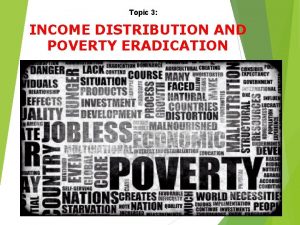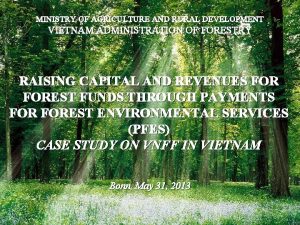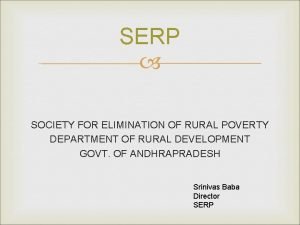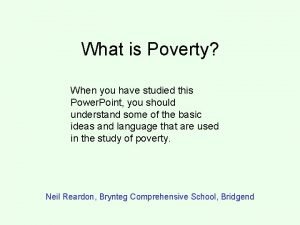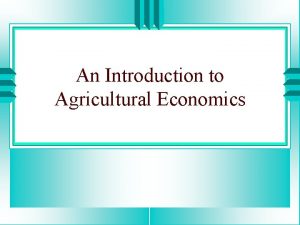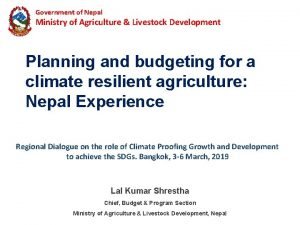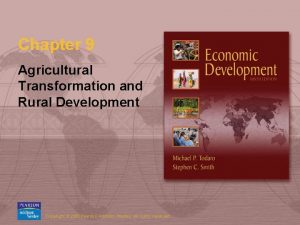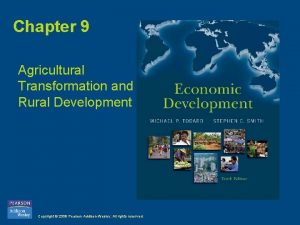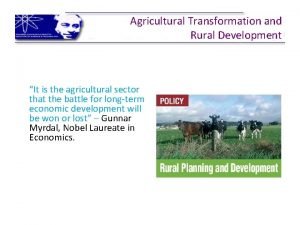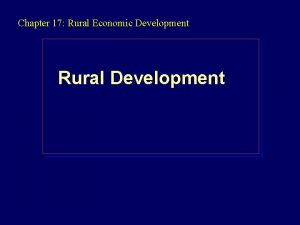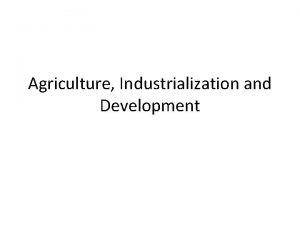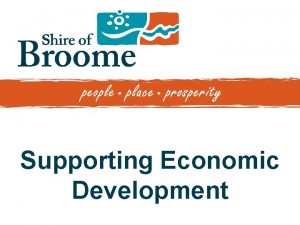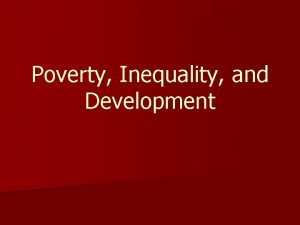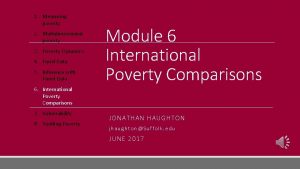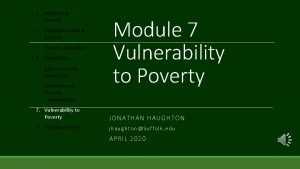Agriculture Economics Rural poverty and economic development Rural













- Slides: 13

Agriculture Economics

Rural poverty and economic development

Rural development during Zia’s regime: Zia mixed the Ayub Khan’s local govt structure and Bhutto’s various developmental programs and named it, “New Strategy” for rural development. Aim was to establish institutions at lower level so socio economic lives of the rural areas be improved. He constructed roads, canals, financial and training institutions, and provided linkage facilities for the success of the program

Rural Development in Junejo govt: o Announced 5 -point program o A four-year program was initiated in which education, health facilities, drinking water sanitation, checking of Kachchi Abadies and employment opportunities would be provided to the rural residents.

Benazir Bhutto’s era: During her two tenures she initiated different programs for rural development. Worth mentioning are the following two: a). People’s Works Program b). Social Action Program These programs were aimed to increase the literacy rate and productivity of the labor force in the rural areas

Nawaz Sharif’s era: Programs for rural development started by Nawa Sharif are: a). Tammer-e-Watan (it included urban development, as well). b). Nawaz Sharif carried on with the Social Action Program Both Social Action Program and Tammer-e-Watan were implemented through local govts.

Pervez Musharraf time period: Pervez Musharraf constituted national Reconstruction Bureau (NRB) to transfer power to the grass root level of the society. It is alknown as ”Devolution of Power” initiative. Under the program, Kisan and Mazdoor seats were introduced in the local govts so they can plan for themselves and implement it.

Agriculture Taxation: a) Direct Taxes b) Indirect Taxes Agriculture sector taxation has always been controversial in Pakistan.

Arguments in favor of Taxation: i). Increase in govt revenue ii). Increase tax base iii). Efficient utiilzation of resources iv). Treating agri as industry

Arguments against agri taxation: i) Subsistence farmin ii) Agri as mainstay of economy iii) Reduce efficiency iv) Discourage saving incentives v) Socio-political set up

Taxation System in Pakistan: a). Land Based b). Income Based

a). Land Based Taxation: i) Thos having less 50 acres land were taxed as under: - Irrigated land: min. 4 acres up to 50 acres is taxed @ Rs. 200 per acre - Rain-fed land: min 8 acres up to 50 acres are taxed @ Rs. 100 per acres - Irrigated orchards @ Rs. 700 per acre while rainfed orchards @ Rs. 350 per acre

b). Income Based taxation: -Income up to one lac per year will be taxed at 5% -Income between one to two lacs @ 7. 5% - income between 2 -3 lacs @ 10% - income above 3 lacs @ 15%
 Distinguish between absolute and relative poverty
Distinguish between absolute and relative poverty Ministry of agriculture and rural development cameroon
Ministry of agriculture and rural development cameroon Ecotourim
Ecotourim Society for elimination of rural poverty
Society for elimination of rural poverty Economic growth vs economic development
Economic growth vs economic development Types of poverty in economics
Types of poverty in economics Types of poverty
Types of poverty Economic growth vs economic development
Economic growth vs economic development Importance of agriculture economic
Importance of agriculture economic Maastricht university school of business and economics
Maastricht university school of business and economics Ministry of agriculture and livestock development
Ministry of agriculture and livestock development Chapter 9 agricultural transformation and rural development
Chapter 9 agricultural transformation and rural development Chapter 9 agricultural transformation and rural development
Chapter 9 agricultural transformation and rural development Agricultural transformation and rural development
Agricultural transformation and rural development
